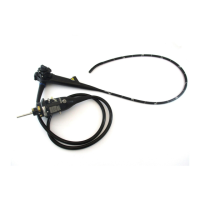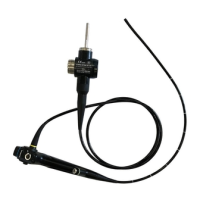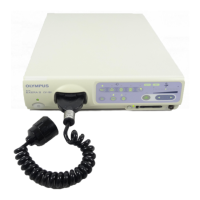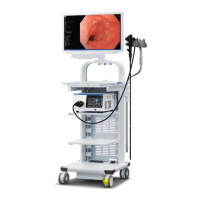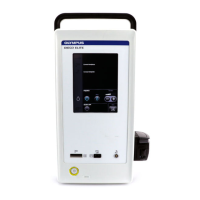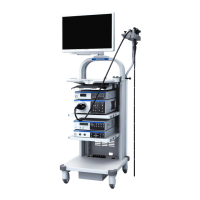• Select the EndoTherapy accessories compatible with the endoscope by referring to
“Channel inner diameter” in “ Specifications” on page 23.
• When using a biopsy forceps with a needle, confirm that the needle is not bent
excessively. A bent needle could protrude from the closed cups of the biopsy
forceps. Using such a biopsy forceps could damage the instrument channel and/or
cause patient injury.
• When using an injector, be sure not to extend or retract the needle from the
catheter of the injector until the injector is extended from the distal end of the
endoscope. The needle could damage the instrument channel if extended inside
the channel, or if the injector is inserted or withdrawn while the needle is extended.
When using EndoTherapy accessories, the image might become dark. In that case,
adjust the brightness of the light source.
Insertion of EndoTherapy accessories into the endoscope
• Do not insert EndoTherapy accessories forcibly or abruptly. The EndoTherapy
accessory may extend from the distal end of the endoscope abruptly, which could
cause patient injury, bleeding, and/or perforation.
• For MD-495
When the biopsy valve’s cap is detached from the main body, it is easier to insert
an EndoTherapy accessory into the instrument channel port (see Figure 3.13).
However, the open biopsy valve, after withdrawing an EndoTherapy accessory, can
reduce the efficacy of the endoscope’s suction system and may leak or spray
patient debris or fluids, posing an infection control risk. When not using an
EndoTherapy accessory, attach the cap to the main body of the biopsy valve.
• For MD-495
When the biopsy valve’s cap is detached from the main body, it may cause patient
debris or fluids to leak or spray from the endoscope, posing an infection control
risk. When the biopsy valve’s cap has to be detached, place a piece of sterile
gauze over it to prevent leakage.
• Do not let the EndoTherapy accessory hang down from the biopsy valve, which can
create a space between the accessory and the valve’s slit or hole. This can
damage the valve, which can reduce the efficacy of the endoscope’s suction
system and may leak or spray patient debris or fluids, posing an infection control
risk.

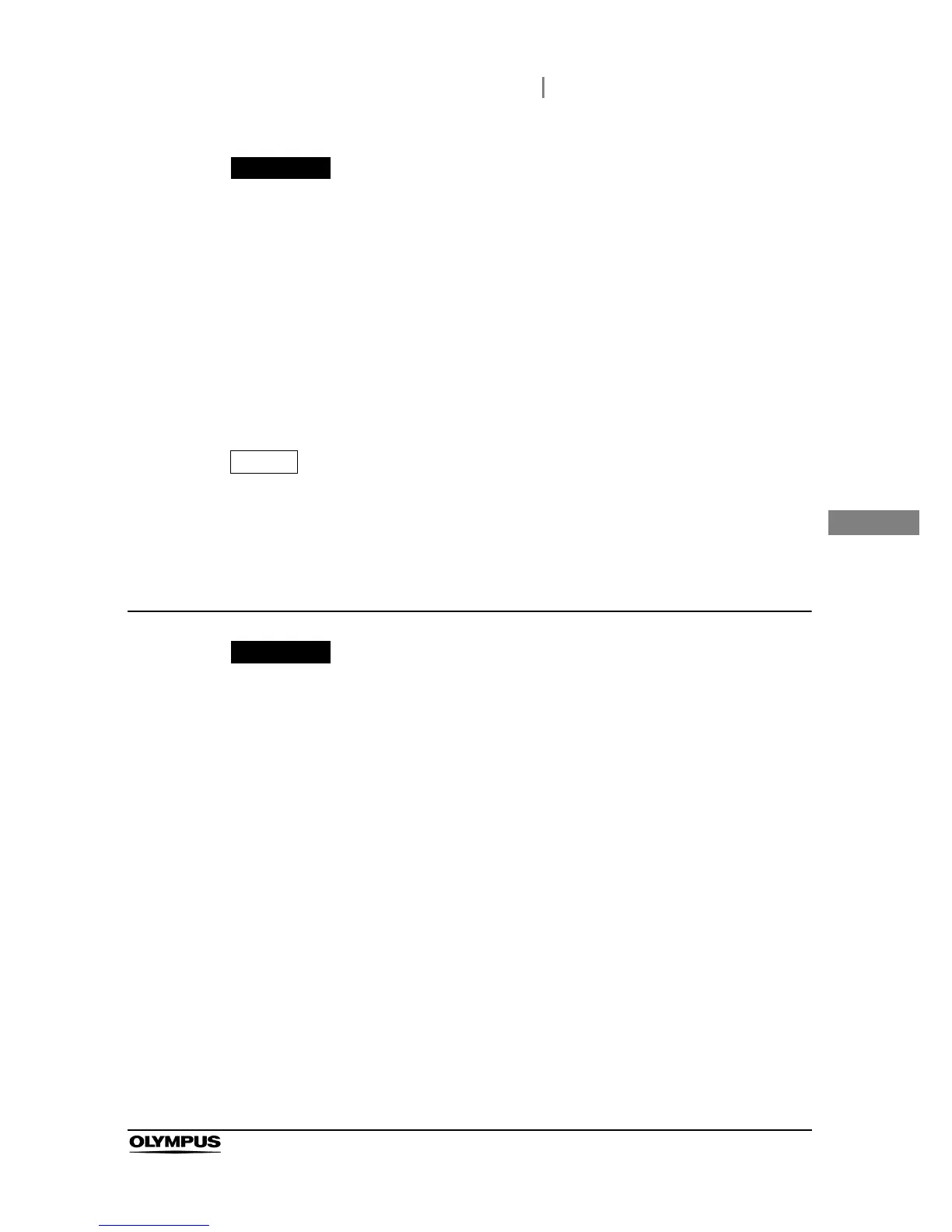